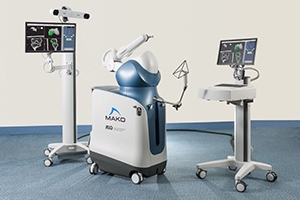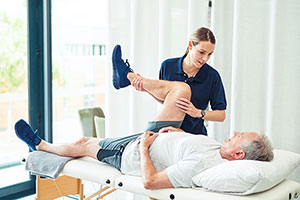The hips are relatively well protected by the upper thigh muscles, glutes (buttocks), and lower back muscles. Unless you’ve suffered severe trauma from a terrible accident, a hip injury most likely results from overuse of the hip joint and the surrounding muscles. Unsurprisingly, we see many cases of hip and groin injuries in athletes.
Coaches, sports organizations, and experienced athletes implement safeguards to prevent physical injuries, from game rules to safety gear guidelines. Given the nature of contact sports, team sports, and highly physical individual sports like gymnastics, running, swimming, and cycling, muscular and joint wear and tear are sometimes inevitable – and so are hip and groin injuries among athletes.
Examples of Common Hip Injuries in Sports
Many athletes experience pain and discomfort in the pelvic region after a major sporting event. But sometimes, these symptoms do not pass as quickly as expected, and when this happens, athletes can get sidelined in their next event. It’s, therefore, necessary to recognize the symptoms of hip injuries in athletes.
Here are some hip injuries in sports that athletes, coaches and trainers should know about:
1. Sprain and Muscle Strain
Though often used interchangeably, muscle strain is stretched or torn muscles, while a sprain is a stretched or torn ligament. They start as microscopic tears, mild cases (Grade I) that can heal naturally if the patient stops engaging in strenuous activities and rests for several weeks. However, if the patient – or in this case, the athlete ignores the signs of a sprain or strain and continues to do physical exertions, the injuries to the muscle and ligament could worsen.
Severe sprain and muscle strain due to chronic overuse of the hip joint and surrounding muscles can progress in severity. For example, a patient’s hip can suddenly give out while standing (Grade II) or an affected muscle or ligament can tear completely and become unable to bear weight (Grade III). Once a sprain or strain crosses the severity threshold to Grades II and III, the athlete should see a hip specialist as soon as possible.
2. Contusion
A contusion is one of the mildest hip injuries in sports. When your hip suffers a blunt force impact (e.g., falling on your hip, receiving a kick in taekwondo, or getting hit by someone’s elbow or knee while playing football), the capillaries in the affected area rupture resulting in a black-and-blue bruise.
If the ilium (the hip’s largest and most prominent bone) takes a direct hit, the area will swell and feel tender, and the pain may increase with applied pressure. Patients can’t raise their legs or move their hips and lumbar spine without feeling pain.
Athletes who suffer contusions on the iliac crest – an injury more commonly known as a hip pointer – will need pain management medication, lots of rest, and supervised stretching and exercises once the pain subsides.
3. Tendonitis
Tendonitis is another result of chronic overuse and is, therefore, one of the most common hip injuries in sports. Tendonitis is the inflammation of the tendons that surround the hips. However, tendonitis can also emerge as a comorbid condition of a pre-existing injury. For example, when athletes suffer a hip pointer, blood flow in the injured area increases resulting in inflammation.
4. Tendinosis
Hip tendinosis also affects the tendons and causes the ligament to deteriorate and weaken. In worse cases, the tendon’s composition and shape change, impacting the hip’s overall function.
Tendinosis and tendonitis are common hip injuries in athletes whose sport requires constant hip movement. Swimmers, marathon runners, golfers, and tennis players have a high risk for both.
5. Bursitis
The hip has two major bursae or fluid-filled sacs that reduce friction in joints and between bones and muscles. But when there’s prolonged pressure on the hip’s bursae, they become inflamed. This results in bursitis, a painful condition that causes extreme discomfort with every movement of the affected hip joint.
Bursitis is one of the more common hip injuries in sports like soccer, football, and hockey players. Its treatment includes ice baths, steroid injections, medications, and physical therapy. Unfortunately, bursitis tends to become a chronic condition and can recur again and again.
6. Hip Labral Tear
The hip socket is surrounded by a thick tissue (the labrum) that supports the joint and its movements. If an athlete miscalculates a move and sharply twists their hips, the labrum can tear or become pinched. Symptoms include a “locking” sensation or stiffness of the hips and soreness in the groin area.
RICE (rest, ice application, compression, and elevation) and steroids can moderate a patient’s pain or discomfort, but in many cases, surgery is necessary to treat hip labral tears.
Causes of Hip Injuries in Sports
In an early study published in the Brazilian Journal of Physical Therapy, 30 sports professionals cited the following causes of injuries among athletes:
- Excessive training
- Incorrect sports techniques
- Inadequate nutrition
- Athlete’s anatomy and physiology
- Previous injuries
- Behavioral factors (e.g., aggression, propensity to ignore pain, lack of body awareness)
- Sports equipment
Any or a combination of these can lead to hip and groin injuries in athletes. While some will experience a mild injury that is treatable with home remedies and sufficient rest, others, unfortunately, suffer debilitating pain and loss of function in their hip. In these situations, athletes should consult hip specialists to ensure their optimal recovery.
Quality and Dependable Treatment from Hip and Orthopedic Specialists
Hip injuries in sports are avoidable, and athletes undergo years of training and education on personal health and safety to prevent them. Unfortunately, unprecedented events can lead to hip injuries, and some, like hip labral tears, will require medical treatment and surgery to heal.
The American Hip Institute is the best place to seek help for hip injury treatment for athletes. Our experienced physicians and orthopedic specialists are licensed to perform various hip treatments, including surgical procedures like arthroscopy, resurfacing and hip replacement. If you or an athlete you know is showing symptoms of a hip condition that may need more than the at-home remedies mentioned above, our clinic is ready to accommodate you. Contact us to schedule an appointment or talk to an American Hip Institute specialist.




